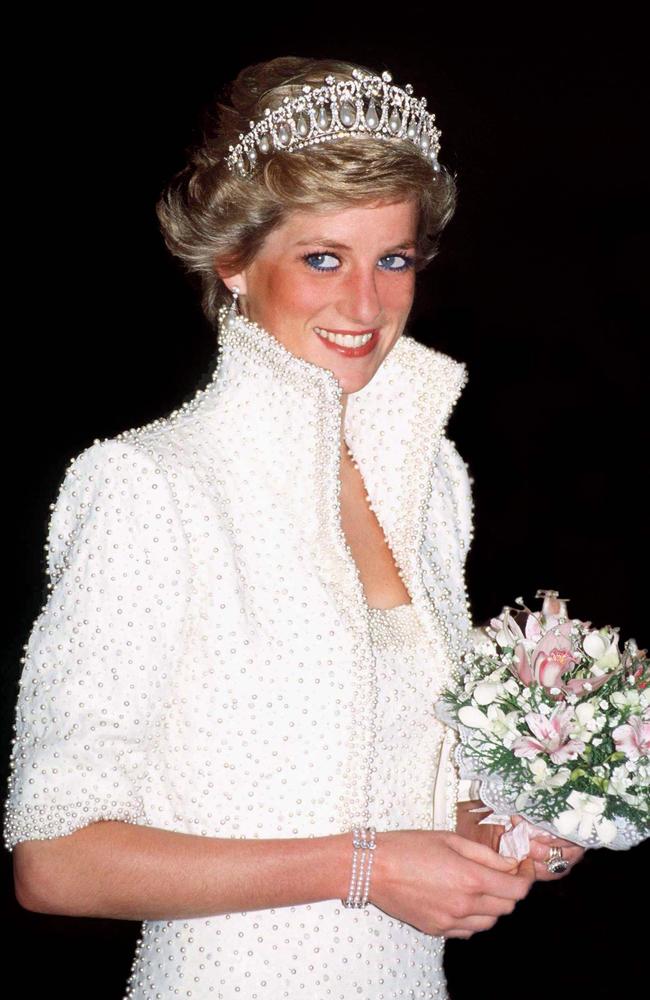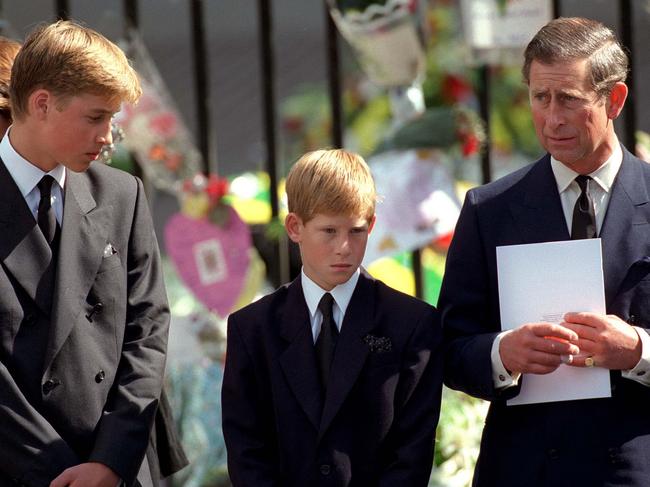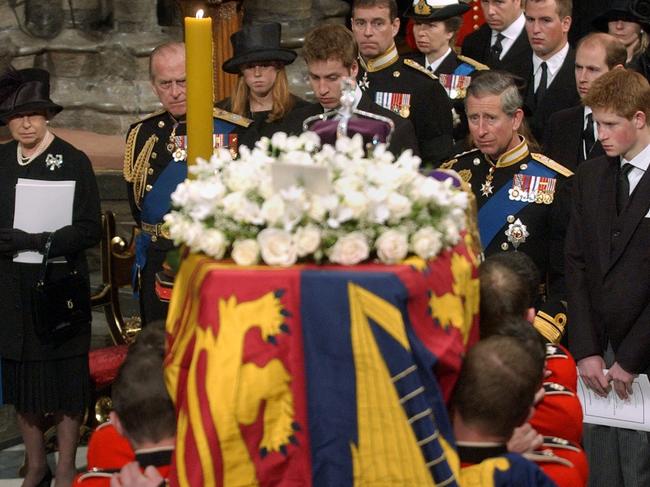With the world watching, Prince Philip’s funeral will differ from other royal send-offs
In a custom-made Land Rover, Prince Philip will be farewelled in a funeral that has major differences to royal memorials of the past.
Royals
Don't miss out on the headlines from Royals. Followed categories will be added to My News.
Sombre, regal and steeped in tradition.
In a custom-made Land Rover, Prince Philip will be farewelled with a royal funeral that has major differences to those of the past.
Laying a loved one to rest is heartbreaking for those left behind and even more so if that grief is played out in the public spotlight.
The images of Prince William and Prince Harry – then aged 15 and 12 – bowing their heads as they walked behind their mother Princess Diana’s coffin, alongside Prince Charles and Prince Philip, is permanently etched into history, defining the impact of Diana’s sudden death in 1997.
A funeral is the most private of moments in a family, but for the royals it is played out in a very public manner.



Now it is Prince Philip who will be farewelled with the world watching.
The Duke of Edinburgh’s funeral will be held inside St George’s Chapel on the grounds of Windsor Castle but his service will be distinctly different to memorials from years gone by.
For one, Philip’s memorial – organised via the code name “Operation Forth Bridge” – falls during COVID, and as such will only be attended by 30 mourners led by Queen Elizabeth.
The Queen, 94, will reportedly have to sit alone and wearing a mask under strict government-enforced protocol.

Philip’s service will be a “ceremonial royal funeral” firmly rooted in tradition but without some of the pomp and fuss associated with a state funeral, which is reserved for monarchs.
In planning his own memorial, the Duke of Edinburgh – who died aged 99 – requested that his coffin be transported in a purpose-built Land Rover, which he helped design.
An eerie silence will fall on the streets of London, which will be without crowds due to the strict enforcement of COVID restrictions.
This is in stark contrast to every other high-profile royal funeral in recent history.
PRINCESS DIANA
The Princess of Wales’s funeral drew a reported three million mourners – and a televised audience of more than 2.5 billion worldwide – who lined the streets from Kensington Palace to Westminster Abbey.
Held on September 6, 1997, Diana’s memorial was attended by Hollywood stars (Nicole Kidman and her then-husband Tom Cruise were there, as well as Vogue editor Anna Wintour and Donatella Versace).
The service featured a performance by Diana’s close friend, Elton John, who rewrote the lyrics of Candle In the Wind.
Diana’s sons Harry and William walked behind the hearse carrying their mother’s body for an hour and 47 minutes, from Kensington Palace to Westminster Abbey. They reportedly only agree to walk behind her coffin because their grandfather Prince Philip said he’d stand side-by-side with them.


Delivering his eulogy, Diana’s brother Charles Spencer made critical remarks about the “ever-present paparazzi”, saying that his sister was “sneered at by the media”.
He told mourners that the People’s Princess “talked endlessly of getting away from England”, words that hold even more meaning now that Diana’s son Prince Harry has left his royal duties and lives in Santa Barbara, California.
“There appeared to be a permanent quest (by the media) to bring her down,” Spencer told mourners … and the world.
“(She was) the most hunted person of the modern age.”
The night before Diana’s funeral, and in the midst of criticism for her cold response to her death, the Queen gave a televised address.
In it, she called her former daughter-in-law “an exceptional and gifted human being”.








THE QUEEN MOTHER
An outpouring of public grief was seen at The Queen Mother’s funeral, after she died aged 101 on March 30, 2002.
The wife of King George was farewelled in typically regal fashion in a pre-COVID era, including a formal procession through the streets of London.
Prior to the service at Westminster Abbey (the bell was chimed 101 times in tribute), her body lay in state and was visited by an estimated 200,000 mourners.
Reports at the time suggested her daughter Queen Elizabeth remained stoic during the funeral and did not shed a tear.







PRINCESS MARGARET
Weeks prior to The Queen Mother’s death, her daughter Princess Margaret died aged 71.
Queen Elizabeth’s only sister had a stroke and cardiac arrest, and passed away at King Edward VII’s Hospital on February 9, 2002.
Her wishes were that her funeral was to be a private occasion at St George’s Chapel, Windsor Castle, and unlike other royals, Princess Margaret – also titled as the Countess of Snowdon – was cremated.
The Queen announced Maragret’s death “with great sadness” in a written statement via Buckingham Palace.
Many considered Margaret to have had a troubled life, known for her scandalous relationships, smoking heavily, with an extravagant lifestyle and fashion sense. “When my sister and I were growing up, she was made out to be the goody-goody one,” Princess Margaret told The Reality of Monarchy. “That was boring so the press tried to make out that I was wicked as hell.”





KING GEORGE
It was the death of the Queen’s father King George VI in February 1952 that signalled a new era for the Royal Family.
His death is what transformed then-Princess Elizabeth into Queen Elizabeth.
Attending his funeral, the Queen, Princess Margaret and The Queen Mother wore long black veils – a tradition reserved for the funeral of a King or Queen.
His body lay in state at St Mary Magdalene Church in Sandringham during a period of national mourning.
It was visited by more than 300,000 mourners at Westminster Hall. He was farewelled with a formal procession through the streets, with his coffin atop a gun carriage, and his body was interred in the royal vault, before being moved to the King George IV Memorial Chapel at St George’s Chapel in 1969.






Years later, in 2002, the ashes of Princess Margaret and later, the body of Queen Elizabeth, The Queen Mother, were also laid to rest there.
King George’s procession was the first royal funeral service to have been televised.




